I'm designing a circuit for my 3D printer's aluminium heating plate (200x200 mm) and I wanted to be sure before buying resistors. Also, I'm using a Sanguinololu 1.3a. I want it to heat at 120° fast.
So, I think ~150 Watts was enough.
I'll explain everything, people who'll have same problems may find solution here :).
Using 5 x 5ohm in parallel means I have a 1ohm load.

simulate this circuit – Schematic created using CircuitLab
$$ \frac{1}{R_{equivalent}}=\frac{1}{R_1}+\frac{1}{R_2} + \frac{1}{R_3} + \frac{1}{R_4}+ \frac{1}{R_5} \\ \frac{1}{R_{equivalent}}=\frac{1}{5}+\frac{1}{5} + \frac{1}{5} + \frac{1}{5}+ \frac{1}{5} \\ \frac{1}{R_{equivalent}} = 1 \\ R_{equivalent} = 1 $$
I am using 12V to it, I am getting: $$ U = R_{equivalent}I \\ I = \frac{U}{R_{equivalent}} \\ I = \frac{12}{1} = 12 A $$
12A of current from the PSU. Which would give 12*12 = 144W, or 144/5 = 29W per resistor.
I wanted to use these: RESISTOR 50W 5R
Are my calculus ok ? If they are, do you know a way to find the time it'll take (in theory) to heat up it to 120 ° ?